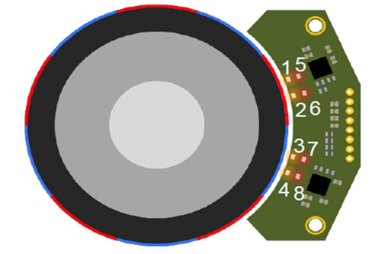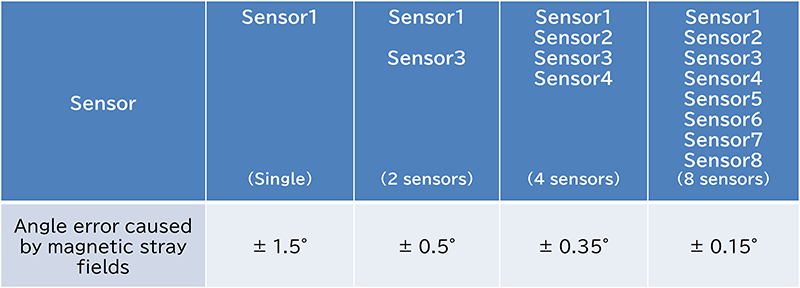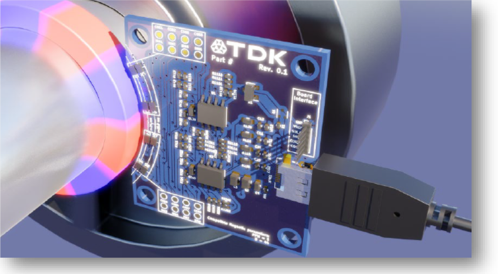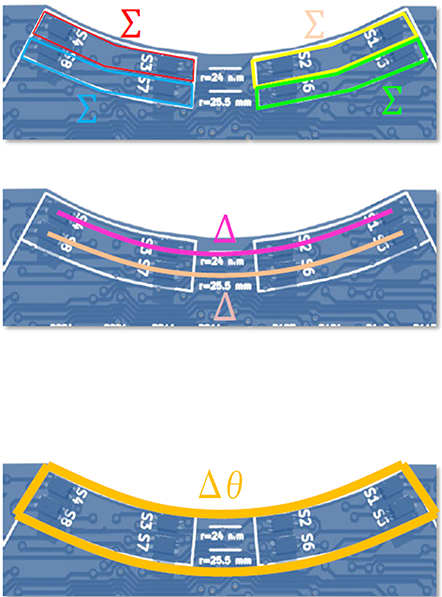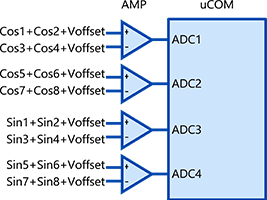Stray-field compensation
by TMR sensor
Degradation of accuracy due to stray-field noise is a common problem for magnetic field sensors. Securing a distance between the source of stray field and the sensor, or placing a magnetic shield, are major restrictions on design and lead to higher system costs. In addition, it was difficult to select an appropriate design while adjusting the balance between compensation effectiveness and cost. As a solution, TDK proposes a method of suppressing magnetic stray-fields using multiple sensors. In the "summary of compensation measures" below, the effect of stray field is compensated by using the output difference of two sensors that output opposite phases to the magnetic field signal. By selecting the number of sensors to be used, rational countermeasures can be selected while considering the expected stray field and allowable angular error.
Overview of compensation
measures
・Place two sensors at positions 1 and 2 that output 180 degrees out of phase with respect to the magnetic field signal from the magnet. At this time, the two sensor outputs with respect to stray field are substantially in phase and at the same level.
・Using a differential output increases the signal power and suppresses the influence of stray-field noise.
Comparison of effects by number of sensors
The number of sensors used and their arrangement can be adjusted according to the target accuracy and the cause of the angular error to be improved.
*Under our simulation conditions (magnet Br: 270 mT, stray-field strength: 5 mT)
Calculation method
(off-axis placement)
- Step 1: Add sin and cos outputs of two adjacent sensors
*S12 = S1 + S2, also S34, S56, S78
--> Suppresses the distortion of the second harmonic component that occurs in off-axis angle detection - Step 2: Find the difference between the sum of two adjacent sensor outputs found in step 1
*S34 – S12 = S1234, S78 – S56 = S5678
--> Increase resistance to stray field - Step 3: Calculate arc tan from S1234 and S5678
*Angle θ1234 obtained from the inner sensor
*Angle θ5678 obtained from the outer sensor - Step 4: Compare the detected angle values of the inner and outer sensors
*The magnetic field strength of the outer sensor is half that of the inner sensor
*θ1234 has twice the accuracy of θ5678 against stray field
*So 2 x θ1234 – θ5678 = θ12345678
--> It is possible to further increase the stray-field resistance
Block diagram with 8 sensors
Related information
YouTube
There is also an explanatory document about compensation measures against magnetic stray fields for on-axis (shaft-end magnet) placement. Please contact us.
For questions, requests for samples/evaluation boards, etc., please contact us from here.


